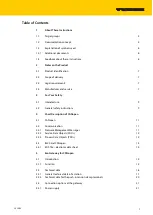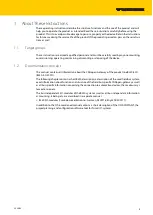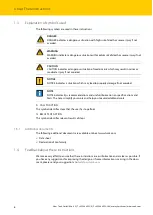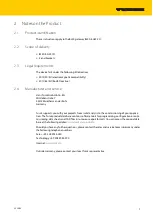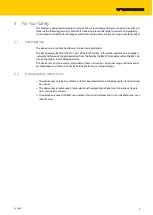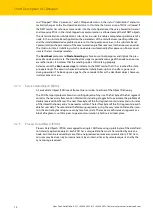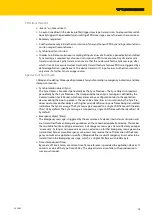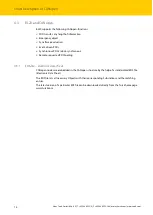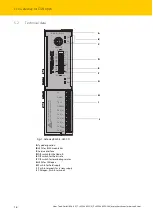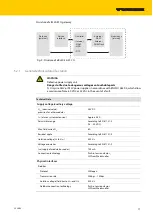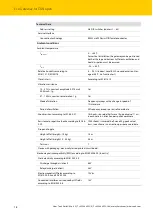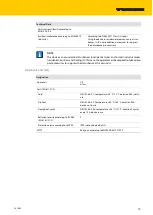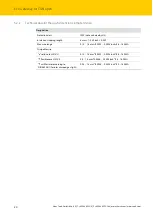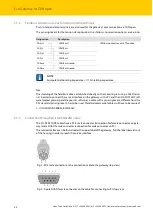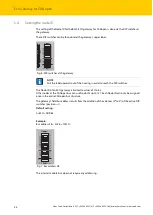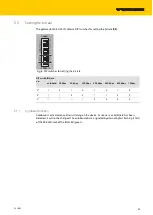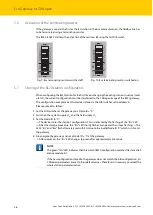
11
2020/09
4 Short Description of CANopen
4.1
CANopen
The following description of CANopen is an excerpt from the homepage of CiA (CAN in Automa
-
tion), the international users’ and manufacturers’ organization for CAN.
CANopen is an open, non-proprietary network protocol. It consists of a profile family, based on a
communication profile and several device profiles.i The CANopen communication profile is stan
dardized as CiA DS-301 (Application Layer and Communication Profile).
The CANopen device profile for I/O-modules has been published as CiA DS-401 (Device Profile for
I/O-Modules).
CANopen is based on the following standards:
ISO 11 898 (Physical and Data Link Layer) Layers 1 and 2 of the ISO/OSI communication model
CiA DS-301 (Application Layer and Communication Profile) CANopen communication profile
CiA DS-302 (Framework for Programmable CANopen Devices) CANopen Network Management
NMT
CiA DS-401 (Device Profile for I/O-modules)
CiA DS-406 (Device Profile for Encoders) CANopen device profile for counter modules
CiA DS-102 (CAN Physical Layer for Industrial Applications) General application in the field sector
(connectors and bit rates) on the basis of ISO 11898
4.2
Communication
The lower layers of CANopen are defined according to the ISO-OSI model in the ISO 11898 standard.
Communication between the individual nodes is made by transmitting "Telegrams".
4 different types of telegram message are defined for CANopen:
Network management messages
Service data objects SDO
Process data objects PDO
Predefined messages
4.2.1
Network Management Messages
Network management messages are used in the network to control the nodes and their operating
states. This type of message makes it possible, for instance, to configure the data transmission
mechanism of a node.
The Network Management objects include Boot-up message, Heartbeat protocol and NMT mes
-
sage.
Boot-up message, Heartbeat and Node Guarding are implemented as single CAN frames with 1-
byte data field.
The NMT message is mapped to a single CAN frame with a data length of 2 byte. The CAN-Identifier
is 0. The first byte contains the command specifier and the second contains the Node-ID of the
device that must perform the command (in the case of Node-ID 0 all nodes have to perform the
command). The NMT message transmitted by the NMT master forces the nodes to transit to another
NMT state. CANopen defines the following status: "Initialization", "Pre-Operational", "Operational"
Summary of Contents for BL20-ECO
Page 1: ...Your Global Automation Partner BL20 E GW CO ECO Gateway for CANopen Instructions for Use...
Page 2: ...2 Hans Turck GmbH Co KG T 49 208 4952 0 F 49 208 4952 264 more turck com www turck com...
Page 6: ...Hans Turck GmbH Co KG T 49 208 4952 0 F 49 208 4952 264 more turck com www turck com 4...



